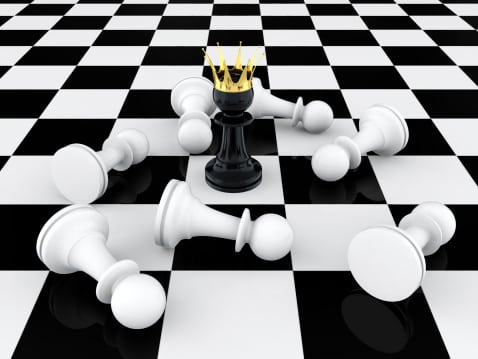 If you are a chess student or even an experienced player, the power of the Internet to improve your game cannot be denied.
If you are a chess student or even an experienced player, the power of the Internet to improve your game cannot be denied.
However, anyone who has typed "chess strategies" or "chess tactics" into a search engine will agree with me that the results can be confusing. Where do I start? What kind of chess strategies websites are out there? Are any of them useful? Which chess strategies information is accurate, and which of it is misleading, incorrect, or erroneous? Which chess products are worth buying?
Well, there are a few crucial pieces of information that I'd like to give you to simplify your search for chess strategies. This information will enable you to use the Internet to the maximum, so you can find the exact chess strategies information that you need to increase your chess rating.
The first thing to remember, is to do a quick bit of research on the author of the text you are reading. Have they posted their chess rating? If they are a coach, how long have they been coaching? Have their students demonstrated success at the chess board? Don't believe everything you read on the internet.
The second thing to do is to do a quick search at the chess exchange forum for the writer's name or the resource that you are recommending. I've found the chess exchange forum to be a great resource. There are a large number of experienced players posting chess strategies, chess tactics, and tips on this forum. Again, you can't believe everything you read, meaning, just because someone said it on a forum doesn't mean it is 100% accurate. However, if a majority of forum posts are positive about the resource or author in question, you can usually trust the majority consensus. You can also click on the forum poster's profile (usually if you click on their name to the left of the post) where they often provide their experience level, chess rating, and other information. This information can help you evaluate the validity of their post. (You can access the Chess Exchange Forum by going to my chess strategies site, scrolling to the bottom of the page, and clicking the "resources" link.)
I've also found the chess exchange forum to be a great place to discover new resources for chess improvement, as well as a great place to ask chess strategies related questions. The forum contributors are very generous with their time. They will often discuss your questions at length, providing great answers that you won't find anywhere else (especially for free).
The third way to leverage the Internet to improve your chess game is to simply play chess online! One of the best places to play is the Free Internet Chess Server (FICS). FICS requires that you install a small program on your computer in order to play, but it is well worth it. This allows you to gain experience at the chess board whenever you have a free moment: lunch break, late at night, after work. Study is important, but in order to improve you must actually play chess against real opponents! (You can find more information about the Free Internet Chess Server by going to my chess strategies website, scrolling to the bottom of the page, and clicking the "resources" link.)
Online chess coaching is the forth way to utilize the Internet to gain valuable chess strategies and chess tactics. A simple Google search can bring up many chess coaches who will charge you a fee to analyze your games and coach you to improve. Often you can email them your previous chess games, and they will respond with a written analysis of the games, including tips for how to improve. Again, remember what I've shared already about evaluating information you read on the internet, and apply those principles to choosing your chess coach. The chess exchange forum is a great place to research and contact prospective chess coaches.

The last way to use the Internet to improve your chess game is by downloading chess software. There are a few pieces of chess software that are crucial to have:
ChessBase. The ChessBase format is quickly becoming a standard on the Internet. Many resources, annotated games, tutorials, etc... are being produced in this format. ChessBase has a full version that you can purchase online, but they also provide a free, pared down version which is more than enough to open and view resources that are in ChessBase format. (Download ChessBase by going to my chess strategy website link provided above, scrolling to the bottom of the page, and clicking the "resources" link.)
Finally, a Good Chess Engine is also essential for improving your game. A chess engine refers to the part of a chess program that deals with the intelligence of game play. Chess engines can analyze games, moves, mistakes, and more. Most chess engines use the common approach of attempting all possible moves from a given position and then choosing the best one with the help of a search. (Access a long list of chess engines by going to my chess strategy website link above, scrolling to the bottom of the page, and clicking the "resources" link.)
Bio: Chad Kimball has been playing chess since he was a young boy, and is now an editor and publisher, publishing chess instruction books and courses on the Internet. He is responsible for bringing an exciting resource to the Internet: "The Grandmaster Strategy Training Library."
This Video Training Kit contains 22 Videos and 2,213 Pages of Winning Chess Strategies for the price of a single chess tips book at the bookstore. These 22 videos and 14 books enable you to confidently sit down at the chessboard, knowing that you are prepared with years of tested strategies to DEFEAT your opponent. Click here for more information about this exciting chess resource: chess strategies.














